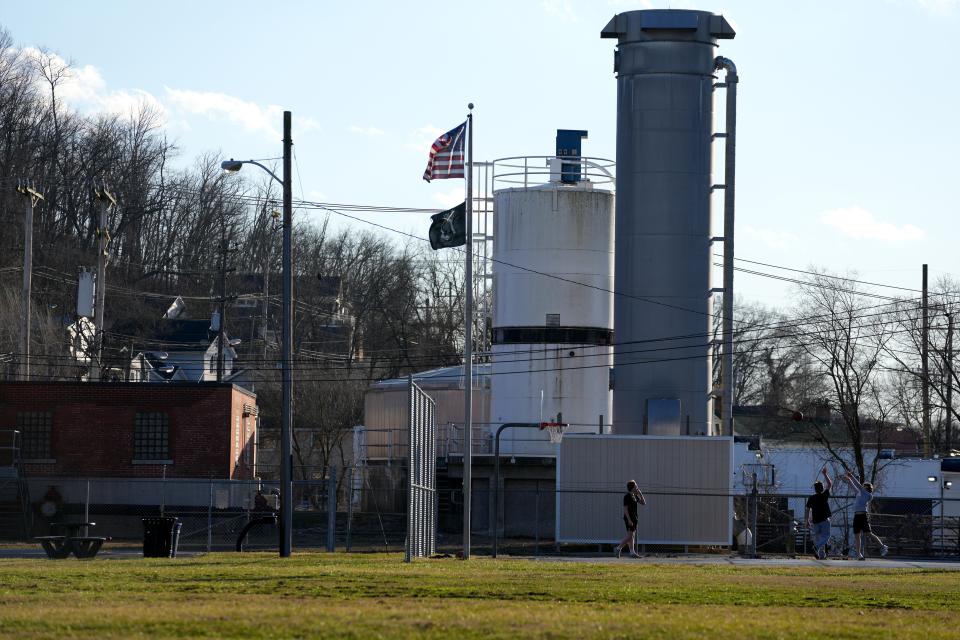Milford testing for contaminants at former gasoline station site now used for parking

Milford City Council has hired environmental consultants to test groundwater at a parking lot in the city's downtown area where benzene levels slightly above drinking-water standards have been found in the past.
Council agreed to pay Terracon Consultants, Inc. $16,850 for the work at the city-owned lot next to Harvest Market in the 300 block of Main Street.
A gas station formerly operated there.
Benzene is found in gasoline vapors and the U.S. Environmental Protection Agency says it is a known human carcinogen.
But "at this time, the city doesn’t anticipate that the (parking lot) site is a health hazard to humans and wildlife," Milford City Manager Michel Doss said.
Doss said Milford bought the lot in 2014 and removed two, 6,000-gallon underground gasoline storage tanks in accordance with requirements of the state Bureau of Underground Storage Tank Regulations.
15 monitoring wells were installed and tested in 2017
The city subsequently installed 15 monitoring wells at the site and found benzene just over permissible levels in one area, he said.
Milford reported its findings to the storage tank bureau in 2016.
The following year, the bureau asked the city to test the site again and to determine target levels of acceptable soil contamination north, northwest and west of one monitoring well and south, southwest and west of a second.
Milford told the bureau in an interim report in 2018 that soil tests around three monitoring wells in the west and northwest portions of the site did not detect contaminates of concern, Doss said.
He said the city also reported that previous groundwater analysis showed no impermissible levels of contaminants south and east of the former pit for gasoline storage tanks.
“The city resolved to resample the entire 15 wells to verify the (contamination) levels and compare it to historical data," Doss said.
More groundwater tests ordered in 2020
In 2020, the storage tank bureau asked Milford for another round of testing. The city is doing that now with the help of Terracon Consultants, of Cincinnati's East End neighborhood.
Groundwater tests being conducted now were ordered in 2020.
Doss said preliminary sampling of wells on and offsite indicated reduced impact. But two wells – one on-site and another in the street are still above the action levels for drinking water.
Once the report is finalized, the city will work with the storage tank bureau to determine any future remediation on and around the site.
"The city is determined to be in full compliance with (storage tank regulations) and provide any cleanup or additional monitoring necessary at the site," he said.

Unrelated aquifer cleanup underway nearby
A quarter mile from the parking lot, an unrelated cleanup of a contaminated aquifer that supplies water to Milford is underway.
The U.S. and Ohio environmental protection agencies are spending about $3.3 million to decontaminate a polluted plume of water at and near the city's wellfield on Water Street by the Little Miami River.
Environmental and Milford officials say regular testing shows the city's water meets federal safety standards because Milford has been purifying it for more than 30 years.
The U.S. EPA has come up with a remediation plan that eventually will make the city's decontamination process unnecessary.
The federal EPA believes the primary source of the highest level of contaminants in Milford’s aquifer is at or near the former Baker Feed & Seed property at the corner of Baker Drive and Lila Avenue.
The EPA says the biggest health concern there is tetrachloroethylene, a chlorinated solvent the agency says is likely a carcinogen for humans. It is typically used in dry cleaning and as an industrial metal degreaser. Multiple commercial and industrial businesses have operated at and around Baker and Lila over the years, including a dry-cleaning facility.
The cleanup may take more than five years.
This article originally appeared on Cincinnati Enquirer: Milford parking lot to be tested showed low levels of benzene in past

